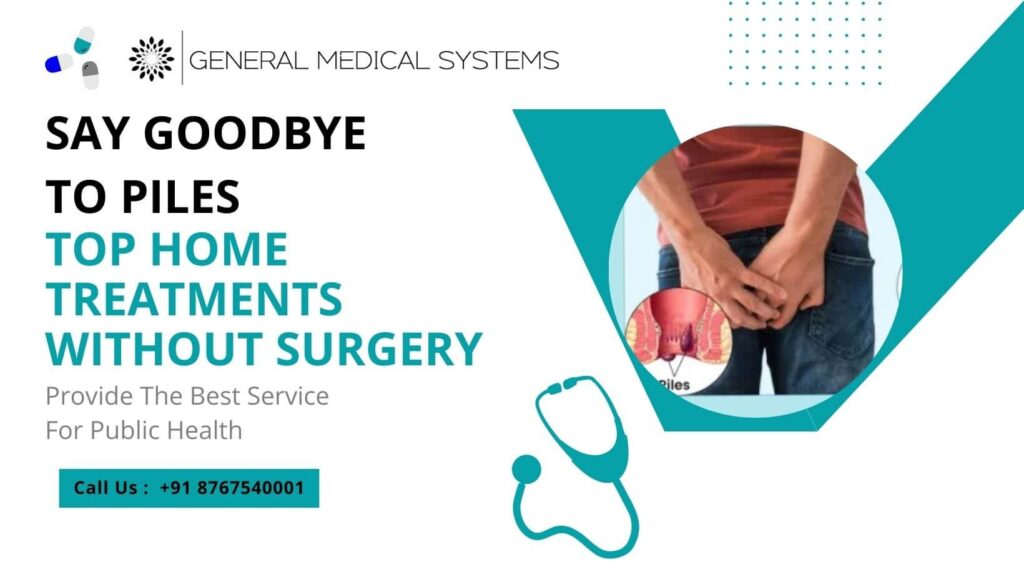
Living with piles—commonly known as hemorrhoids—can be uncomfortable, painful, and disruptive to daily life. Fortunately, piles treatment at home is not only possible but often recommended as the first line of care. With the right natural remedies, dietary adjustments, and lifestyle habits, many people experience lasting relief without surgery or heavy medications. This in-depth guide explores proven home strategies to help you manage and prevent piles naturally.
Understanding Piles
Piles are swollen veins in the lower rectum or around the anus, similar to varicose veins. They may develop internally (inside the rectum) or externally (under the skin surrounding the anus).
Internal piles usually present with painless rectal bleeding during bowel movements.
External piles can be itchy or painful and sometimes form clots that lead to significant swelling.
Common Causes
Chronic constipation or diarrhea
Straining during bowel movements
Prolonged sitting or standing
Pregnancy-related pressure
Low-fiber diet and poor hydration
Recognizing early signs—such as minor bleeding, itching, or discomfort—can make piles treatment at home more effective.
Why Home Treatment Works
Most mild to moderate cases respond well to natural care. Home treatment aims to:
Reduce inflammation and swelling
Improve stool consistency to prevent straining
Relieve pain and itching
Promote long-term bowel health
When practiced consistently, home methods can minimize the need for invasive procedures.
1. Boost Fiber Intake
A high-fiber diet is the cornerstone of piles treatment at home. Fiber softens stool, making bowel movements easier and reducing the need to strain.
Best Fiber-Rich Foods:
Whole grains such as oats, barley, and brown rice
Fresh fruits like apples, pears, and berries
Vegetables including broccoli, spinach, and carrots
Legumes: lentils, chickpeas, kidney beans
Nuts and seeds for healthy fats and additional fiber
Aim for at least 25–30 grams of fiber per day. Increase intake gradually to prevent gas or bloating. Pair fiber with ample water—8–10 glasses daily—to keep stool soft.
2. Hydration Habits
Dehydration hardens stool, making constipation worse. Herbal teas, clear soups, and plain water are excellent choices. Limit caffeinated drinks, which may dehydrate you.
3. Warm Sitz Baths
A warm sitz bath provides almost instant relief from itching and irritation. Fill a basin with 3–4 inches of warm water and sit for 15–20 minutes, two to three times daily.
Add a handful of Epsom salt or a few drops of lavender oil for extra soothing.
Pat the area dry gently afterward to avoid further irritation.
4. Herbal & Natural Remedies
Nature offers powerful allies for piles treatment at home:
Witch hazel: Acts as a natural astringent to shrink swollen tissue.
Aloe vera gel: Calms inflammation and hydrates delicate skin.
Coconut oil: Provides anti-inflammatory and antibacterial benefits.
Turmeric paste: Traditional Ayurvedic remedy for reducing swelling.
For more detailed guidance, explore Herbal Treatment for Piles – Complete Home Care Guide.
5. Regular Exercise
Moderate exercise improves blood circulation and prevents constipation. Aim for at least 30 minutes of movement daily.
Walking: Gentle on the body yet effective.
Yoga poses such as Pawanmuktasana and Malasana aid digestion.
Pelvic floor exercises strengthen rectal muscles.
Avoid heavy lifting or strenuous activities that increase abdominal pressure.
6. Improve Toilet Habits
Changing bathroom habits is crucial:
Respond promptly to the urge to have a bowel movement.
Avoid prolonged sitting on the toilet—read books elsewhere!
Consider a footstool to elevate your feet, mimicking a natural squatting posture that eases rectal pressure.
7. Topical Oils and Natural Applications
Herbal oils provide direct, soothing relief. Piles pain relief oil blends ingredients such as sesame, castor, or medicinal herbs to reduce inflammation and discomfort. Apply gently with clean hands or cotton.
For details, see Piles Pain Relief Oil – Natural Healing.
8. Over-the-Counter & Herbal Tablets
When natural remedies need a boost, mild OTC creams or herbal tablets can reduce swelling and pain. Choose products that are free from harsh chemicals and consult a healthcare provider for long-term use.
Internal link: Piles Relief Tablets – Fast Natural Support
9. Manage Constipation—the Root Cause
Constipation is a major trigger for hemorrhoids. Prevent it with:
A consistent high-fiber diet
Adequate hydration
Probiotics from yogurt or fermented foods
Gentle physical activity
If needed, natural laxatives like psyllium husk can help.
10. Stress Reduction
Stress affects digestion and bowel habits. Try:
Deep-breathing exercises
Meditation or mindfulness practice
Adequate sleep (7–8 hours)
Long-Term Prevention Tips
To maintain the results of piles treatment at home, incorporate these habits daily:
Eat a balanced, fiber-rich diet.
Stay hydrated.
Exercise moderately most days.
Avoid long hours of sitting.
Keep body weight in a healthy range.
When to Seek Medical Help
Despite best efforts, see a doctor if you experience:
Heavy rectal bleeding
Severe, persistent pain
Symptoms lasting more than a week
Large external hemorrhoids or blood clots
A professional can rule out other conditions and recommend advanced treatments if required.
Learn More – Piles Treatment at Home for Further Reading
Key Takeaways
Piles treatment at home is effective for many mild and moderate cases.
Fiber-rich foods, proper hydration, and herbal remedies form the foundation of natural relief.
Consistency in lifestyle habits prevents recurrence and promotes digestive health.
Always consult a healthcare professional if severe symptoms persist.
By adopting these strategies, you can significantly reduce discomfort, heal naturally, and prevent future flare-ups—often without surgery or heavy medication.